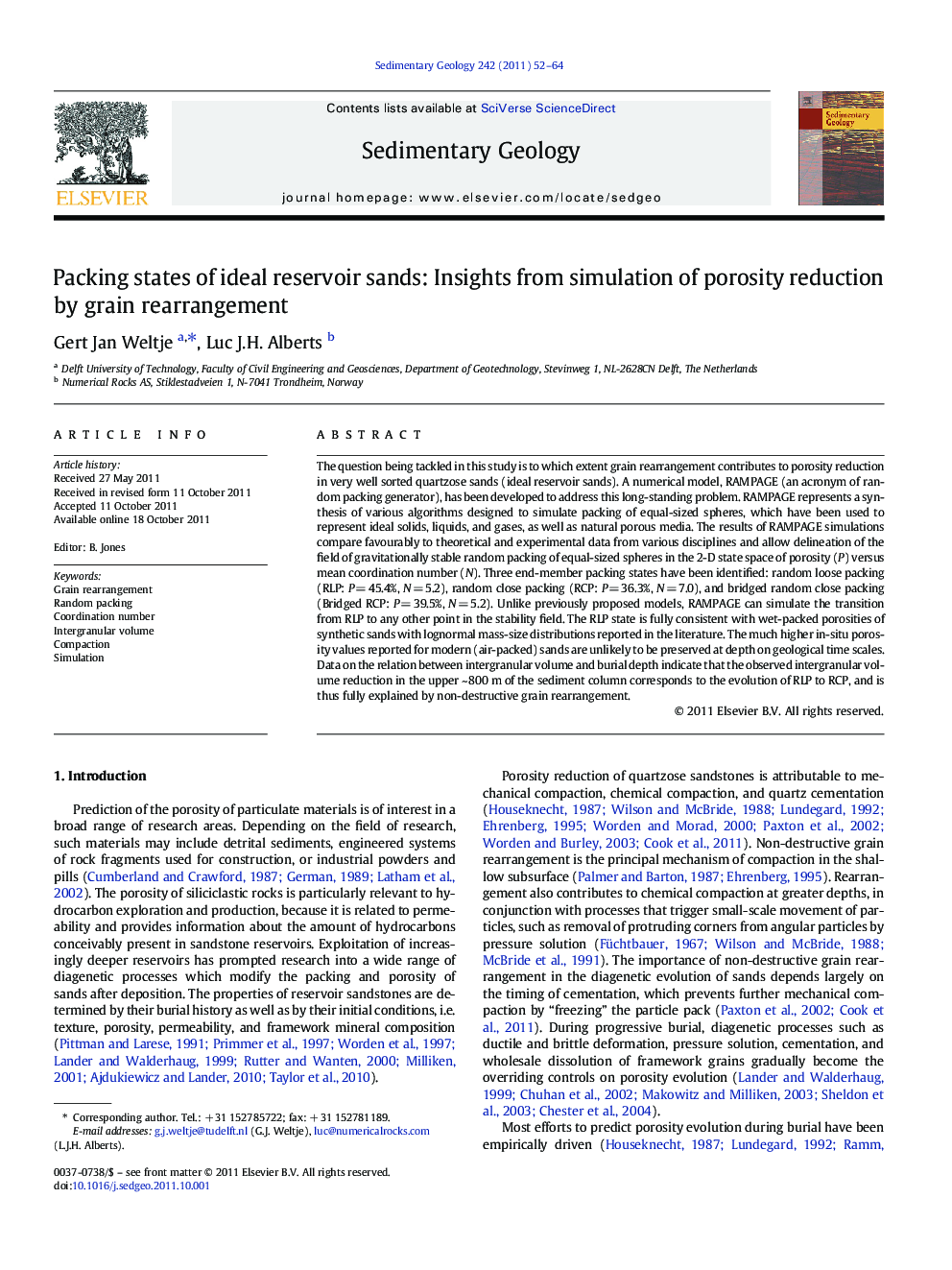| کد مقاله | کد نشریه | سال انتشار | مقاله انگلیسی | نسخه تمام متن |
|---|---|---|---|---|
| 4689894 | 1636100 | 2011 | 13 صفحه PDF | دانلود رایگان |

The question being tackled in this study is to which extent grain rearrangement contributes to porosity reduction in very well sorted quartzose sands (ideal reservoir sands). A numerical model, RAMPAGE (an acronym of random packing generator), has been developed to address this long-standing problem. RAMPAGE represents a synthesis of various algorithms designed to simulate packing of equal-sized spheres, which have been used to represent ideal solids, liquids, and gases, as well as natural porous media. The results of RAMPAGE simulations compare favourably to theoretical and experimental data from various disciplines and allow delineation of the field of gravitationally stable random packing of equal-sized spheres in the 2-D state space of porosity (P) versus mean coordination number (N). Three end-member packing states have been identified: random loose packing (RLP: P = 45.4%, N = 5.2), random close packing (RCP: P = 36.3%, N = 7.0), and bridged random close packing (Bridged RCP: P = 39.5%, N = 5.2). Unlike previously proposed models, RAMPAGE can simulate the transition from RLP to any other point in the stability field. The RLP state is fully consistent with wet-packed porosities of synthetic sands with lognormal mass-size distributions reported in the literature. The much higher in-situ porosity values reported for modern (air-packed) sands are unlikely to be preserved at depth on geological time scales. Data on the relation between intergranular volume and burial depth indicate that the observed intergranular volume reduction in the upper ~ 800 m of the sediment column corresponds to the evolution of RLP to RCP, and is thus fully explained by non-destructive grain rearrangement.
► Grain rearrangement during compaction of rigid-grain sands has been simulated.
► Three end-member packing states have been defined: RLP, RCP, and Bridged RCP.
► Porosity reduction in the upper 800 m can be fully explained by grain rearrangement.
Journal: Sedimentary Geology - Volume 242, Issues 1–4, 15 December 2011, Pages 52–64